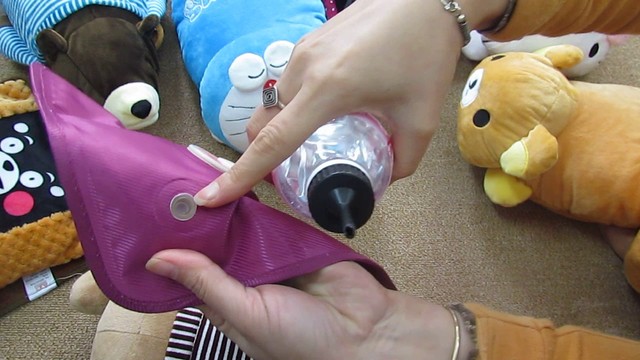In the winter, especially on cold days, in addition to heating equipment in the house, many users also equip and use hot water bags. These hot water bags have colorful and eye-catching designs, and they are compact. Users can carry them anytime, anywhere, mainly to warm their hands or any part of the body.
Basically, most users know that hot water bags contain hot water, which provides warmth. But not everyone knows what kind of water is actually inside the hot water bags and what it looks like.


Hot water bags are popularly used in the winter to warm different parts of the human body (Illustration photo)
To clarify this, many users have conducted experiments by cutting open a hot water bag to see its contents. The results have shocked many viewers.
What’s Inside a Hot Water Bag?
Firstly, there is a video of a guy from India, recorded 3 years ago. The guy used a knife to cut open a part of the hot water bag. Inside the bag, there was indeed water, but it was not as clean as many people thought. The inside of the hot water bag was filled with dirt and brown sediments.

A guy from India cutting open a hot water bag to reveal the dirty water inside (Photo from Youtube Trick Boy)
Another Youtuber, who has over 5 million subscribers, conducted a similar experiment, and his video has garnered over 2 million views. In this Youtuber’s case, the water and the inside of the hot water bag were not dirty like in the Indian guy’s video.
This Youtuber confidently poured all the water from the hot water bag into a glass. The result showed that the water was still hot and clear. He also removed the entire outer layer of the hot water bag to prove that the inner part of the bag was not dirty.
Another user conducting an experiment, cutting open the hot water bag and pouring the water, which was clear, out of it (Youtube Video from YASH KE EXPERIMENTS)
From the experiments of these two users, it can be seen that not all hot water bags have the same contents and appearance. So, does the cleanliness, color, or appearance of the water inside the hot water bag affect its effectiveness?
Does the Water Inside a Hot Water Bag Matter?
The answer is no. The water inside the hot water bag’s bladder is a different kind of solution from regular filtered water. It is a mixture of water, salt, and other chemicals with heat-retaining properties. That’s why, after plugging in the hot water bag to heat it up, it can retain warmth to serve the warming and soothing needs of humans.
Users don’t need to worry too much about the color of the water inside the hot water bag. What’s important for users to remember is that, during the use of the hot water bag, it should never be replaced or refilled with other water. In addition, it’s necessary to regularly check the condition of the bag’s bladder to see if it’s torn or damaged.

Users should not replace the water inside the hot water bags themselves (Illustration photo)
The outer layer of a hot water bag is usually made up of a fabric layer and a PVC layer. The purpose of the outer layer is not only to enhance the appearance of the hot water bag but also to prevent the solution from leaking out. Sharp objects should not be placed near, next to, or on the hot water bag. When the surface of the bag’s bladder becomes dirty, it should be gently cleaned with a safe solution and a soft cloth.
Currently, most popular hot water bags are electric ones. Here are some other considerations for users to effectively and safely use hot water bags in the winter:
– Charge the hot water bag according to the manufacturer’s instructions. Do not charge it for too long, only charge it until the indicator light on the bag turns off. This means the bag has finished charging.
– Do not use the hot water bag while it is plugged in. Instead, wait around 7-10 minutes after unplugging it before using it. This is to avoid the risk of burns.

Charging the hot water bag should not take too long, and users should not charge and use it at the same time (Illustration photo)
– When the hot water bag leaks, it should absolutely not be used because it not only causes leaking of the solution but also poses the risk of electric leakage.
According to Đời sống Pháp luật































